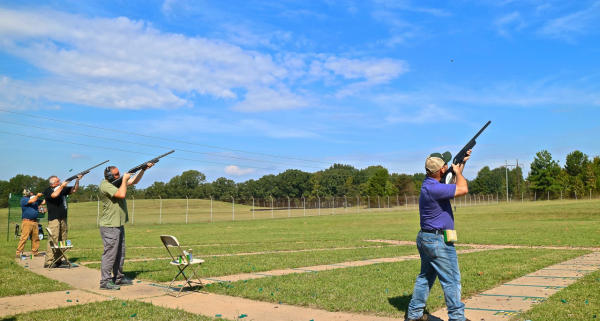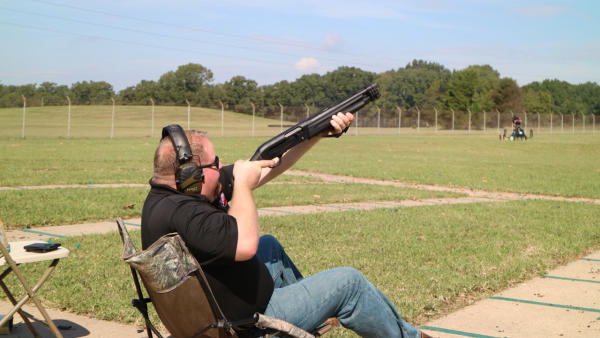masterThere’s nothing like starting a day of looking at new shooting equipment out with a bang, and I’ve never quite started the day with a bang as big as yesterday morning’s at Remington’s Lonoke, Arkansas facilities.

The first thing we were offered in our second day preview for 2019 was the chance to fire the largest gun in the Remington inventory. It’s called the “Master Blaster” and it’s an 8-gauge monstrosity that fires three ounce slugs into commercial kilns. It’s totally practical in that application, but absolutely nothing but fun when used to blast an assortment of pumpkins and watermelons on the Remington shooting range.
Had absolutely nothing to do with the products we tried and manufacturing facilities we toured, but it was certainly one of the more unique experiences I’ve ever had in touring manufacturing facilities or previewing new products.
Yesterday was dedicated to trying the newest Remington shotguns and touring their massive Lonoke facilities. Testing the shotguns involved shooting several relays of Crazy Quail with the company’s new V3 and Tac-13 shotgun. No, it’s not a typo, we had the opportunity to shoot the company’s tactical shorty shotgun during a round Crazy Quail.


The rounds of Crazy Quail and sporting clays gave us the opportunity to see more of the facilities inside Remington’s 1200+ acre Lonoke facility. It also gave us a break from the facts, figures and information overload we’ve gotten over the past 36 hours as we’ve seen all the new offerings they’ll be rolling out in 2019.
From there, it was on to see how Remington makes ammunition. And if there’s one word that describes that entire process, it’s gigantic. Remington produces some 10-million rounds of ammunition per day. That’s 2.6 billion (2,600,000,000) rounds annually- in addition to 120 million components.


Accomplishing that herculean task requires more than 850,000 square feet of facilities under roof and 1,125 employees to run the 1300 individual pieces of equipment. There are some 12 miles of steam and water lines running through there, and more than 400,000 gallons of water per day are used in the process. The company has its own power and wastewater treatment facilities - in essence it’s a nearly independent manufacturing town.
Keeping the facilities running requires some 44 million pounds of lead, 12 million pounds of copper and five million pounds of zinc every year. And that raw material moves through a system that’s an intriguing blend of modern technology and time-tested manufacturing techniques.
“It’s like walking from the 1970s into 2018,” one of my companions observed as we moved through the facilities. In the older areas, equipment that was state of the art - in the 1940s still bangs, clatters and rolls along as it seemingly always has. Much of that equipment has been on the job far longer than any of its operators have been alive.
In stark contrast, the new facilities are neat, quiet and comfortable. There, robotics and more modern manufacturing techniques have calmed the din and turned the workers into observers. With modernization, two workers can supervise machines that can turn out five times the amount of work as the older machines.
Yet, in some areas, the older machines are still in use because, as our tour chaperone told me, “they still do the job as well as anything we could get today.”
We were given the opportunity to ascend Lonoke’s 12 stories “shot tower” to see how the shot for Remington’s shells is actually created. It’s difficult to convey the idea, but the tower’s height allows the dropped globules of molten lead to form and cool-naturally into the round shot. Seeing the workers atop the tower making certain the molten lead kept flowing made me appreciate the fact I was only visiting. It was a hellishly hot environment where not paying constant attention to your work could have horrifying consequences. After we came down, one of my group remarked that “until today, I though hell had to be underground. Now I’m not so certain.“
That’s a philosophical question we’ll consider another time. But having seen the steps involved in making it, I’m going to have a healthier respect for every round I fire after today. It went through quite a process to get to me.
--Jim Shepherd